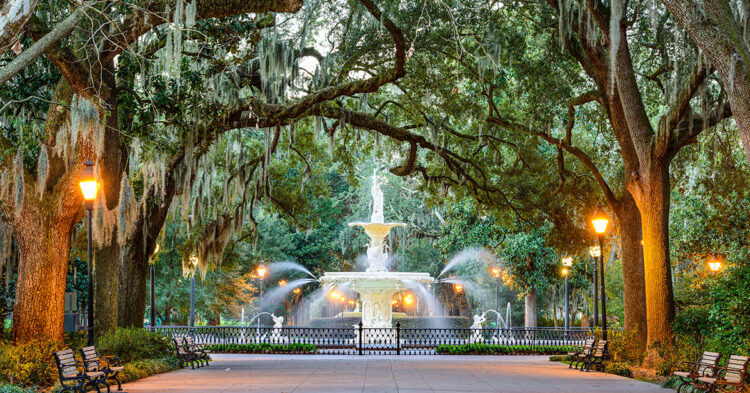Savannah, Georgia, is best known for its historic squares surrounded by moss-covered oaks and horse-drawn carriages. If you are looking for a laid-back atmosphere, a peek into the south’s history, and excellent cuisine, consider Savannah, GA, as your next destination
This coastal Georgia city has much more to offer than the cobblestone streets lined with canopy trees. The setting for the novel and movie “Midnight in the Garden of Good and Evil,” Savannah’s glass brims with a varietal of rich southern culture. Let’s explore a few of the best things to do and see in Savannah.
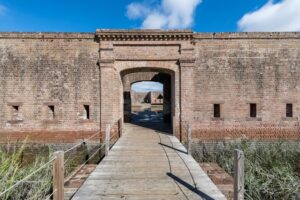
There are not many U.S. cities better to stroll through time than Savannah. Start your historical tour by exploring two historic war-time forts on the outskirts of the city. Famous Old Fort Jackson is an open-air landmark site situated on Savannah’s riverfront. Now a National Historic Landmark, Fort Jackson is one of the oldest fortresses on the East Coast. Watch cannon firings only minutes from Savanah historic downtown and enjoy stunning views of Savannah’s riverfront.
Explore Fort Pulaski, a Confederate base during the Civil War, and then head for Wormsloe Historic Site, one of Savannah’s most photographed sites. The historic area of Wormsloe features the ruins of a colonial estate and the oldest standing structure in the city with a beautiful avenue lined with the Spanish moss oak trees. Don’t miss to visit the ruins and the museum on-site that features colonial artifacts and take photos of the beautiful lane framed with dreamy mossy oak trees.
Explore the unique house museum and the birthplace of Juliette Gordon Low, founder of Girl Scouts of the USA, a youth organization for girls in the United States and those living abroad. Learn about Low’s exciting life and the movement she created in 1912.
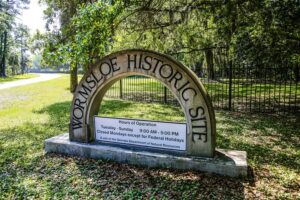
My favorite spot in all of Savannah is Bonaventure Cemetery. If you have any inclination for photography, bring your camera to this 160 acre history lesson. Centuries of family graves and mausoleums, great ghost stories, and amazingly wonderful outdoor sculpture are here on display. It is peaceful, serene, and you are almost certain to get lost among the graves of the rich, the famous and the poor, so keep track of where your car is parked!
John Muir stayed in Bonaventure Cemetery for six days and nights on his Thousand Mile Walk, sleeping on graves, the inspiration for his chapter “Camping in the Tombs.”
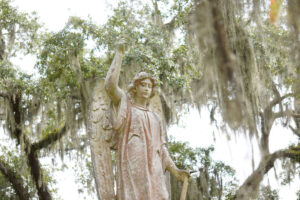
When you need a break from sightseeing, stroll to Savannah’s stunning Forsyth Park, a 30-acre green oasis named after Georgia’s 33rd governor. The city’s famous park located in the Historic District is an ideal place to lounge on the grass, connect with nature, meditate, explore the walking trails, or have a picnic. Relax with a cup of freshly brewed coffee and pastry at the park’s popular coffee spot, or take your little ones to one of the park’s two playgrounds (one is for younger kids and the other one for the older ones). Don’t miss the chance to take stunning photos by the park’s famous water fountain installed in 1858 at the park’s northern edge and take a walk through the fantastic Fragrant Garden.
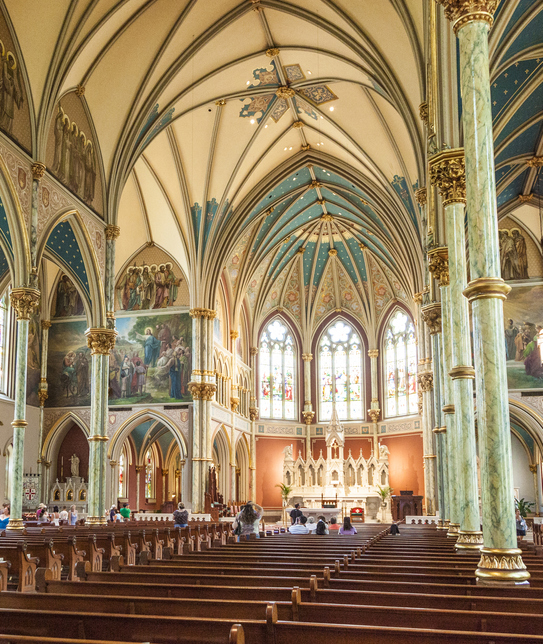
The Cathedral Basilica of St. John the Baptist is one of the landmarks you will not want to miss. This gorgeous church with 81 stained glass windows is a perfect place if you are looking to explore the history, relax, or simply indulge in tranquility. The church was opened in 1876 but almost entirely destroyed by fire in 1898. It was rebuilt and reopened in 1900 and has been open to the community of Savannah and visitors ever since.
The cathedral is open for self-guided tours Monday through Friday. However, no tours are allowed during Masses, other religious events, funerals, and weddings.
Savannah is famous as a paradise for art lovers. From the area’s colonial history to contemporary art and numerous yearly events, Savannah is an important destination for those who love art, and the southern culture is a bonus. Savannah’s oldest public art museum, the famous Telfair Museum of Art first opened in 1886. The museum features two National Historic Landmark buildings, the Telfair Academy and the Owens-Thomas House. You can also visit the unique exhibitions and collections of the contemporary Jepson Center. The city owes the expansion of its arts scene to the Savannah College of Art and Design or SCAD, which opened in 1979 with one building and only 71 students. Today, the college offers programs in photography, film and television, graphic design, animation, and fashion and attracts more than 14,000 students from the United States and abroad.
So if the first thing that popped into your mind when you first read the word “Savannah” was cobblestone streets and Spanish moss-covered oaks swaying in the wind, you were not mistaken. However, this stunning coastal town in Georgia has so much more to offer and the history, tastes, and sights of Savannah will make you long to come back again – right after you visit Charleston, South Carolina just up the road.


